New in 2025

Vera Bulgurlu – Thomas Drew-Bear – Feza Demirkök,Koç Üniversitesi arkeolojik koleksiyonu / The Koç University archaeological collectionIstanbul 2018ISBN 978-605-2116-31-9144 S./pp., zahlr. Farb- und S/W-Abb. / num. colour and b/w-figs., 24 x 16,5 cm; broschiert / softcover

Hazar Kaba – Gülseren Kan Şahin – Babür Mehmet Akarsu – Onur Bozoğlan (eds.),International Symposium on Sinope and the Black Sea Archaeology 'Ancient Sinope and The Black Sea' : proceedings book / Uluslararası Sinope ve Karadeniz Arkeolojisi Sempozyumu „Antik Sinope ve Karadeniz“: bildiriler kitabıSinop 2019ISBN 978-605-88024-8-3VIII + 206 S./pp., zahlr. Farb- und S/Wabb. / num. colour and b/w-figs., 29,7 x 21 cm; broschiert / softcover

Μιχάλης Α. Τιβέριος / Michalis A. Tiverios, Η Ακαδημία Αθηνών αναζητεί την προμήτορά της: η ανορθόδοξη ανασκαφή του Παναγιώτη Αριστόφρονα στην Ακαδημία Πλάτωνος και η οδύσσεια του (1930-1939) / He Akademia Athenon anazetei ten prometora tes(Ακαδημία Αθηνών, Εκδόσεις Κέντρου Ερεύνης της Αρχαιότητος. Σειρά Μονογραφιών 10)Athens 2025ISBN 978-960-404-443-6128 S./pp., zahlr. S/W-Abb./num. b/w-figs., 27 x 20 cm; broschiert/softcover

N. Eda Akyürek Şahin – Roman Jacobek – Fatih Onur – Diether Schürr (Hrsg./eds.),Von Damaskus bis Rom. Wilhelm Müseler, Gesammelte Schriften.(Gephyra Monographs 7)Wien 2025ISBN 978-3-85161-320-9722 S./pp., zahlr. S/W-Abb. / num. b/w-figs., 29,7 x 21 cm; kartoniert / hardcoverDer Band "Von Damaskus bis Rom" versammelt 25 Beiträge des Numismatikres Wilhelm Müseler in deutscher und englischer Sprache, die in den Jahren 1990 bis 2025 erschienen sind sowie einen bislang unpublizierten Aufsatz.The volume “From Damascus to Rome” brings together 25 articles by numismatist Wilhelm Müseler in German and English, published between 1990 and 2025, as well as a previously unpublished essay.Bis 31.12.2025 gilt der Subskriptionspreis in Höhe von 99 €.The subscription price of €99 is valid until December 31, 2025.

Die frühneuzeitlichen religiösen Medaillen und Anhänger aus den archäologischen Grabungen am St. Pöltner Domplatz(Wissenschaftliche Reihe des Stadtmuseums St. Pölten [WISP], Band 3)St. Pölten 2025ISBN 978-3-9505220-5-1244 S./pp., zahlr. Farb- und S/W-Abb./num. colour and b/w-figs., 29,7 x 21 cm; broschiert/softcover
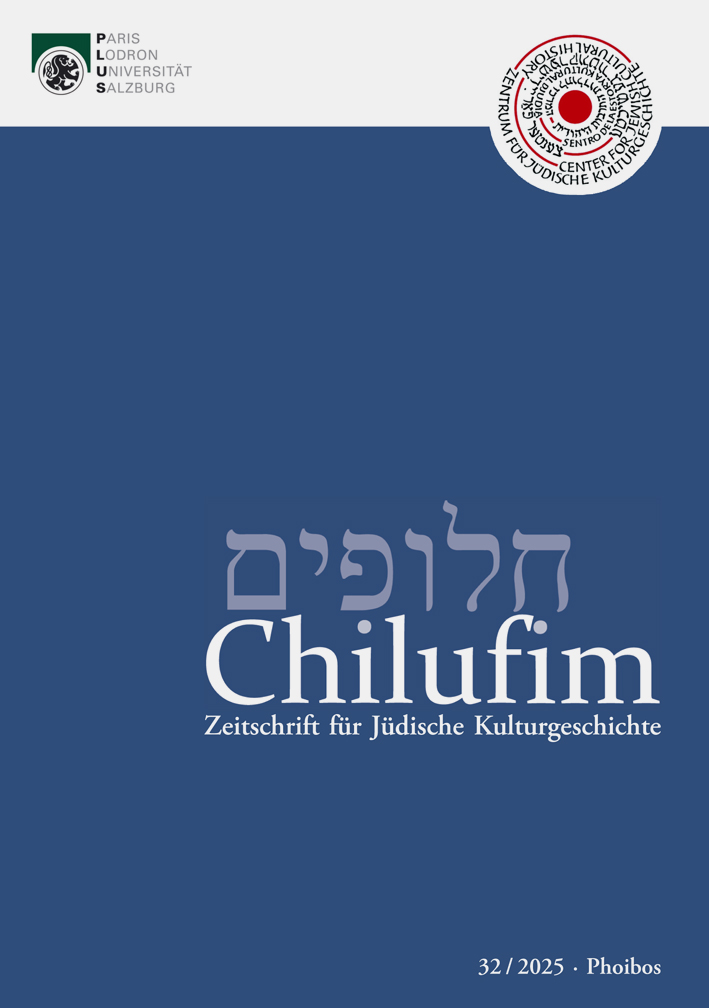
Chilufim. Zeitschrift für Jüdische Kulturgeschichteherausgegeben vom Zentrum für Jüdische Kulturgeschichte der Universität SalzburgBand 32, 2025Themenheft „Geschichte(n) erzählen. Klio und Kalliope in der jüdischen Geschichte Zentral- und Osteuropas“ Hg. von Martina Niedhammer und Olaf TerpitzISSN 1817-9223ISBN 978-3-85161-327-8III + 139 S./pp., 21 x 14,8 cm; broschiert/paperbackAuch als E-Book erhältlich

Walpurga Antl-Weiser,The Venus of Willendorf.Wien 2025ISBN 978-3-903096-49-3200 S./pp., zahlr. Farbabb./num. colour figs., 27,5 x 19,5 cm; broschiert / softcoverThe Willendorf figurine was found in 1908 during an excavation of the Natural History Museum Vienna under the direction of Joseph Szombathy, Hugo Obermaier, and Joseph Bayer. The first well documented Palaeolithic figurine soon became an icon of Palaeolithic art. Recent analyses unveiled the possible origin of the raw material and the production process of the sculpture. The Venus of Willendorf and other Palaeolithic figurines reflect a network of communication across Europe, from France to Russia. Worshiped ancestors, mothers, or mythical beings? Although we will never know their exact meaning and function, the recurrent combination of different types of female figurines and animal sculptures are a testimony of past human thoughts. The figurines could be seen as protagonists in legends told around the fireplaces of Palaeolithic camp sites more than 30,000 years ago.
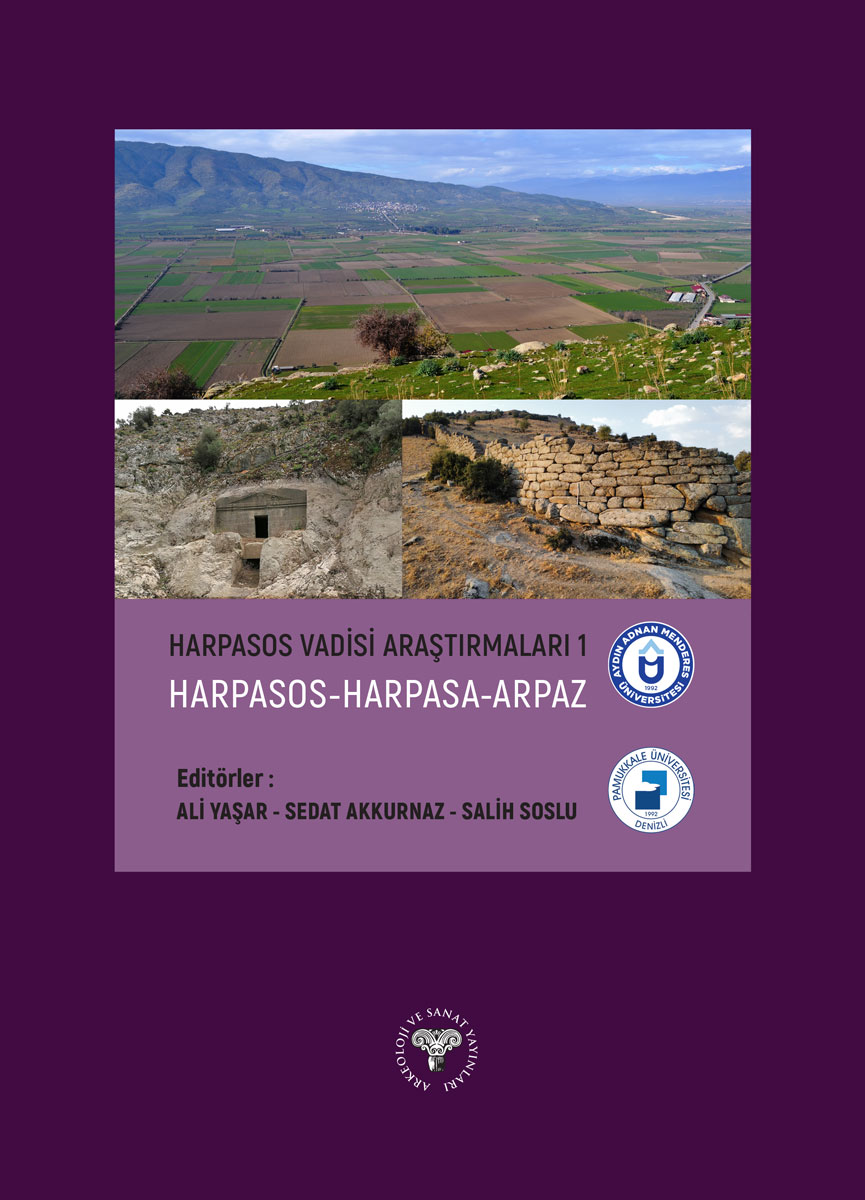
Ali Yaşar – Sedat Akkurnaz – Salih Soslu (eds.), Harpasos Vadisi Araştırmaları 1 – Harpasos-Harpasa-ArpazIstanbul 2025ISBN 978-605-396-584-8520 S./pp., zahlr. S/W-Abb./num. b/w-figs., 26,5 x 18,5 cm; kartoniert/hardcover
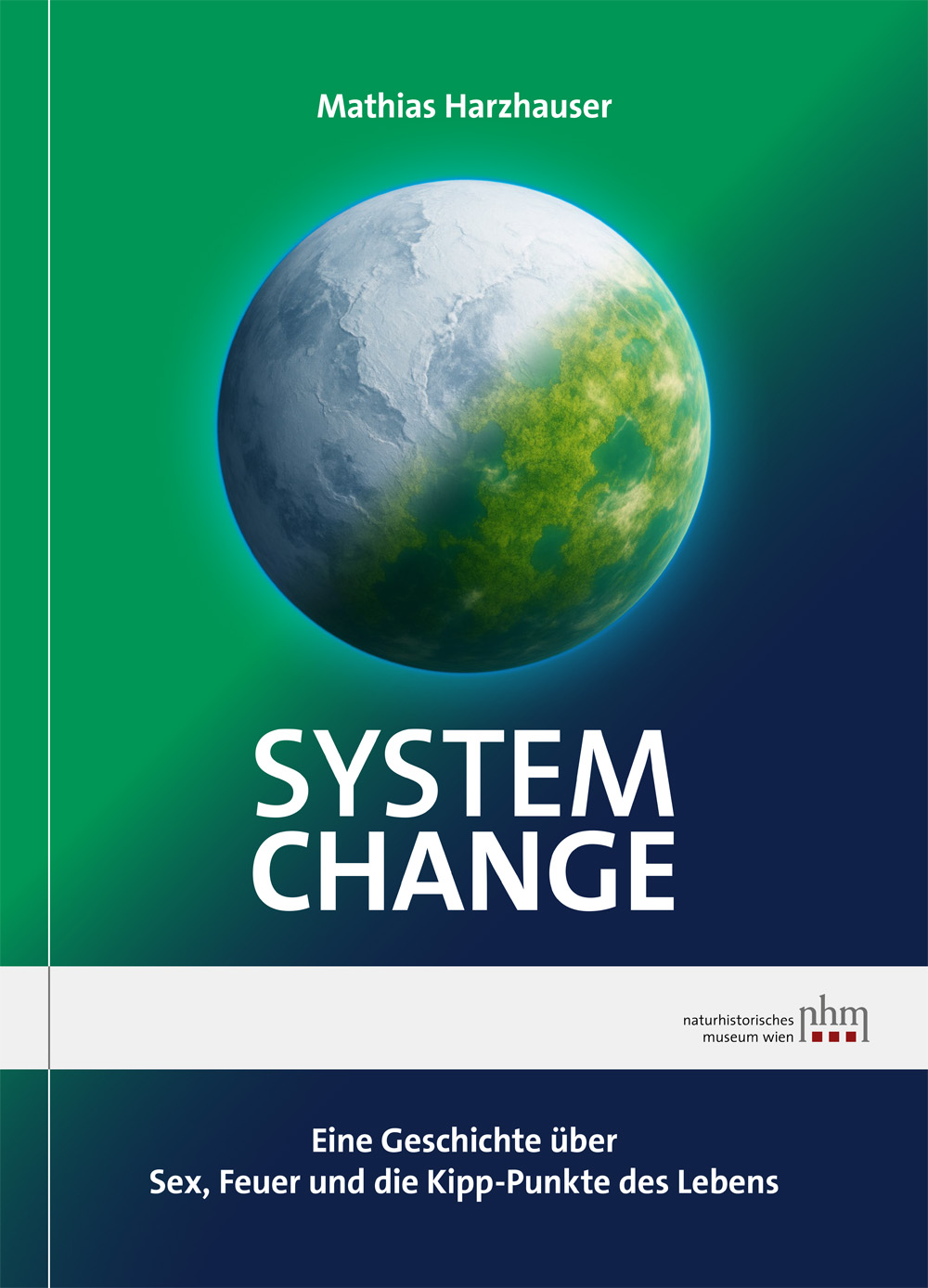
Mathias Harzhauser, System Change. Eine Geschichte von Sex, Feuer und den Kipp-Punkten des LebensWien 2025ISBN 978-3-903096-83-7168 S./pp., zahlr. Farbabb./num. colour figs., 24 x 17 cm; broschiert/softcover Die letzten 3,8 Milliarden Jahre lang war die Geschichte des Lebens ein wilder Ritt. Eine absurde Abfolge aus Scheitern, Neustart, Innovation und gefährlichen Kipp-Punkten. Alles immer in einem Spannungsfeld zwischen »hausgemachten« geologischen Prozessen, tödlichen Bedrohungen aus dem All und den durchs Leben selbst ausgelösten Kaskaden an positiven oder negativen Feedback-Mechanismen. Überraschend oft hat die Erde ihr Aussehen grundlegend verändert. Sie hatte schwarze und violette Phasen, verwandelte sich in einen riesigen Schneeball und wurde zum tödlichen Wüstenplanet. Die wahren Herrscher in diesem Spiel: Mikroben! Sie haben die frühe Atmosphäre vernichtet, die Meere für Milliarden von Jahren wie mit Leichentüchern verhüllt und sogar Eiszeiten ausgelöst. Zugleich schufen sie die Grundlagen für die Entwicklung des höheren Lebens. Bücher über die Geschichte der Erde und über die Evolution des Lebens gibt es viele, doch noch in keinem wurde so kompakt und umfassend hinter die Kulissen des »Systems Erde« geblickt. Dabei vermittelt das Buch das nötige Rüstzeug, um sich auch mit möglichen Zukunftsszenarien des Planeten zu beschäftigen. Werden die Korallenriffe im sauren Meerwasser zugrunde gehen, weil sich das CO² der Atmosphäre wie vor 250 Millionen Jahren im Wasser löst? Oder wird das Methan der Kontinentalhänge schmelzen und wie vor 56 Millionen Jahren ein geologisch kurzes, aber für die Biosphäre verheerendes Supertreibhaus auslösen? Nach der Lektüre des Buches ist klar, seit wann es Schönheit gibt und warum Kühe zu Zwergen werden können!

Reyhan Gül Acar, Akşehir Müzesindeki Anadolu Selçuklu SikkeleriIstanbul 2025ISBN 978-625-5940-65-0166 S./pp., zahlr. S/W-Abb./num. b/w-figs., 24 x 16 cm; broschiert/paperback
![Κοσμάς, Πέτρος [Kosmas, Petros] : Ελληνιστική Μήλος. Ιστορικά και αρχαιολογικά τεκμήρια [= Hellenistike Melos. Istorika kai archaiologika tekmeria] Κοσμάς, Πέτρος [Kosmas, Petros] : Ελληνιστική Μήλος. Ιστορικά και αρχαιολογικά τεκμήρια [= Hellenistike Melos. Istorika kai archaiologika tekmeria]](https://phoibos.at/media/36/d2/75/1753173671/978-960-571-680-6.jpg?ts=1753173671)
Πέτρος Κοσμάς [= Petros Kosmas], Ελληνιστική Μήλος. Ιστορικά και αρχαιολογικά τεκμήρια[= Hellenistike Melos. Istorika kai archaiologika tekmeria]Athen 2025ISBN 978-960-571-680-6406 S./pp., zahlr. S/W-Abb./num. b/w-figs., 24,5 x 17 cm; broschiert/softcover Dieses Buch konzentriert sich auf die archäologischen Überreste von Milos während der hellenistischen Periode und analysiert systematisch die Grab- und Siedlungsdaten, die bei Ausgrabungen zutage kamen. Auf der Grundlage von Primärmaterial und modernen Methoden werden die Lebensweise, die Raumorganisation und die Bestattungspraktiken der Insel beleuchtet und ein umfassendes Bild der Stellung von Milos in der weiteren hellenistischen Welt vermittelt.This book focuses on the archaeological remains of Milos during the Hellenistic period and systematically analyzes the burial and settlement data that have come to light during excavations. Drawing on primary material and modern methods, it sheds light on the island's way of life, spatial organization and burial practices, providing a comprehensive picture of Milos' place in the wider Hellenistic world.

ETEOKPHTH – Eteokriti. Verein zur wissenschaftlichen Erforschung Kretas und der Ägäis (Hrsg.),ETEOKPHTIKA 8, 2023/2024Wien 2025ISBN 978-3-85161-326-158 S./pp., zahlr. Farb- und S/W-Abb./num. colour and b/w-figs., 29,7 x 21 cm; geheftet/stitched

Ελένη Ανδρίκου / Eleni Andrikou, Μυκηναϊκή εγκατάσταση στο βορειοδυτικό άκρο της Καδμείας στη Θήβα [= Mykenaike engkatastase sto boreiodytiko akro tes Kadmeias ste Theba] (Δημοσιεύματα του Αρχαιολογικού Δελτίου, Αρ. 121 / Demosieumata tou Archaiologikou deltiou, vol. 121)Athen 2025ISBN 978-960-386-723-4504 S./pp., zahlr. S/W-Abb. / num. b/w-figs., 29 x 21 cm; broschiert/paperback

Igor Borzić – Anamarija Eterović Borzić – Dinko Radić,Kopila. Grad mrtvih nad poljem Života / The city of the dead above the field of lifeSplit 2025ISBN 978-953-7633-53-0 96 S./pp., zahlr. Farbabb./num. colour figs., 27,5 x 21,5 cm; broschiert/softcover zweisprachig kroatisch - englisch / bilingual croatian - english An extraordinary collection of Hellenistic pottery has been discovered at the prehistoric necropolis of Kopila – vessels carefully placed alongside the deceased, always in the same positions, almost identical in shape and decoration. Guttoi. Skyphoi. Kantharoi. Repeated from grave to grave – like a ritual, like a vow, like a bridge. These vessels are not mere archaeological artefacts. They are objects of passage, soul guardians, silent witnesses to the belief that death is not the end. The pottery from Kopila speaks of an organised funerary system, of a community with clearly defined rituals and spiritual beliefs that transcend time and space. In its silence echoes a question for today’s observer: if we could carry something with us – one object, one thought, one value – what would it be?
![Kliškić, Damir : Dugiš, otok u rijeci vremena [= Dugiš, an island in the river of time] Kliškić, Damir : Dugiš, otok u rijeci vremena [= Dugiš, an island in the river of time]](https://phoibos.at/media/bb/99/6d/1754392213/978-953-7633-42-4.jpg?ts=1754392213)
Damir Kliškić,Dugiš, otok u rijeci vremena [= Dugiš, an island in the river of time. Life in Prehistory – a pile dwelling near Otok on the Cetina]Split 2024ISBN 978-953-7633-42-4 190 S./pp., zahlr. Farbabb./num. colour figs., 27 x 21 cm; broschiert/softcoverDie prähistorische Hüttensiedlung auf Dugiš in Otok bei Sinj wurde 1955–1956 vom Archäologischen Museum in Split untersucht. Es ist die einzige Hüttensiedlung in ganz Dalmatien, die bisher untersucht wurde. Dem gesammelten archäologischen Material zufolge weist dieser Standort eine Kontinuität des Lebens von der mittleren Bronzezeit (1700–1300 v. Chr.) bis in die Antike auf, wie Münzbeispiele aus dem 1.–5. Jahrhundert n. Chr. belegen. Das Hauptziel dieser Ausstellung ist es, der Öffentlichkeit eine sehr spezifische und bisher wenig bekannte Siedlungsform aus prähistorischer Zeit vorzustellen, nämlich die Hüttensiedlung, und zwar anhand eines Teils des ursprünglichen materiellen Erbes von der mittleren Bronzezeit bis zur frühen Eisenzeit. Die Ausstellung präsentiert zahlreiche Objekte aus Metall, Keramik, Knochen und Stein, die an verschiedene wirtschaftliche und soziale Aktivitäten im genannten Zeitraum erinnern. Neben den Originalen zeigt die Ausstellung 18 Kopien von Gefäßen, die nach 18 originalen Keramikobjekten von diesem Standort angefertigt wurden.

Alberto D'Andrea,The Hohenstaufen's coins of the Kingdom of SicilyRoseto degli Abruzzi 2013ISBN 978-88-98330-01-0112 S./pp., zahlr. SW- und Farbabb./num. colour and b/w-figs., 33 x 22 cm; broschiert/softcover

Abuzer Kızıl,Mylasa - Milas (Coğrafya - Tarih - Arkeoloji)Karia'nın Kadim Başkenti Istanbul 2025ISBN 978-625-6212-33-6XIV + 160 S./pp., zahlr. Farbabb./num. colour figs., 27 x 19,5 cm; broschiert/softcover

Ioannis M. Fountoulis,The Agiasma of Ayvalık Holy Water Sanctuary. Panagia Phaneromeni of Kydonies Istanbul 2024ISBN 978-975-6158-42-588 S./pp., zahlr. Farbabb./num. colour figs., 23,5 x 16 cm; broschiert/softcover

Isabella Caneva,The Chalcolithic and Early Bronze Age Sequence at Mersin YumuktepeIstanbul 2025ISBN 978-625-6212-34-3XI + 355 S./pp., zahlr. Farbabb./num. colour figs., 29,7 x 21 cm; kartoniert/hardcover

Barbara Borngässer,Translozierung. Über das Versetzen und Wiederverwenden von BauwerkenWien 2025ISBN 978-3-85161-323-0291 S./pp., zahlreiche Farb- u. SW-Abb./num. colour and b/w-figs., 17,7 x 25,0 cm; kartoniert/hardcover Kurzbeschreibung:Bauwerke gelten als ortsgebunden, unverrückbar. Wir sind gewohnt, Architektur als nicht transportabel wahrzunehmen. Aber wie kommt ein nubischer Tempel nach Madrid, ein südfranzösischer Kreuzgang nach New York, eine norwegische Stabkirche ins schlesische Riesengebirge? Warum und wie verschiebt man spätgotische Kirchen? Wohin mit nicht mehr gebrauchten Ausstellungspavillons? Und schließlich: Was bedeutet diese „Mobilisierung“ von Architektur für Baukunst und Stadtplanung? Das Buch bietet ein Panorama der über 2000-jährigen Geschichte der Translozierung, des Versetzens und Wiedernutzens von Bauwerken. Ausgehend vom Transport ägyptischer Obelisken handeln die Kapitel von den architektonischen Auswirkungen herrscherlicher Macht und romantischer Liebhaberei, schildern die spektakulären Umsetzungen infolge von Tagebau und Wasserwirtschaft und erörtern die museale Präsentation von Baukunst. Breiter Raum ist den Translozierungsverfahren gewidmet: Immer wieder erstaunt die technische Präzision und Logistik, mit der bereits in Antike und früher Neuzeit gearbeitet wurde. Von dort führt der Weg zu modernen Methoden, die Schienen und hydraulische Rollwagensysteme zum Transport von Architektur nutzen. Ein Ausblick führt letztlich in die Welt der Mobile-Homes und die Fiktion schwebender Städte. Zur Autorin Dr. Barbara Borngässer ist Kunsthistorikerin, Verfasserin und Herausgeberin zahlreicher Publikationen zur Architektur der Neuzeit, insbesondere in Spanien, Portugal und Brasilien. Seit Jahrzehnten arbeitet sie für internationale Künstlerlexika und Datenbanken. In ihren jüngsten Forschungen beschäftigt sie sich mit der weltweiten Neugotik im zeitgenössischen Kirchenbau.
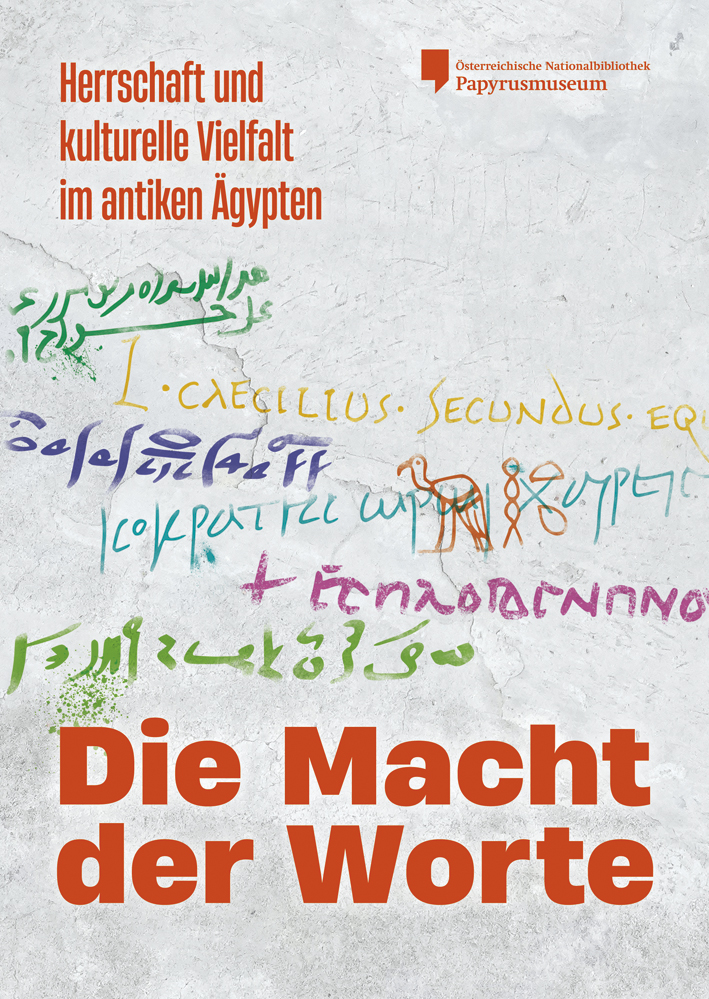
Bernhard Palme – Angelika Zdiarsky (Hrsg.),Die Macht der Worte. Herrschaft und kulturelle Vielfalt im antiken Ägypten(Nilus 29)Wien 2025ISBN 978-3-85161-324-7161 S./pp., zahlr. Farb- und S/W-Abb. / num. colour and b/w-figs., 24 x 17 cm; englisch Broschur / softcover Sprache ist die zentrale Ausdrucksform des Menschen, Schrift die wichtigste Kulturtechnik zur Kommunikation und Wissensvermittlung. Eine gemeinsame Sprache stiftet Identität und fördert Zusammengehörigkeit, Schrift verbreitet Gedanken und bewahrt ein kulturelles Gedächtnis. Die Ausstellung zum multilingualen Ägypten zeigt anhand zahlreicher Papyri die verschiedenen Sprachen, die von ca. 1500 v. Chr. bis 1000 n. Chr. im Land am Nil gesprochen und geschrieben wurden, sowie deren Einfluss auf Verwaltung, Kultur und Gesellschaft, wie etwa die Kommunikation zwischen Herrschern und Beherrschten oder die Rolle der Priester und Kulte bei der Bewahrung der religiösen Identität.

Tamás Góczon,Death as Image-Building.Cato's Suicide and the Evolution of a Legend(István Hahn Lecturers X)Budapest 2025ISBN 978-963-489-798-9ISSN 2061-7348132 S./pp., 20 x 13 cm; broschiert/softcover
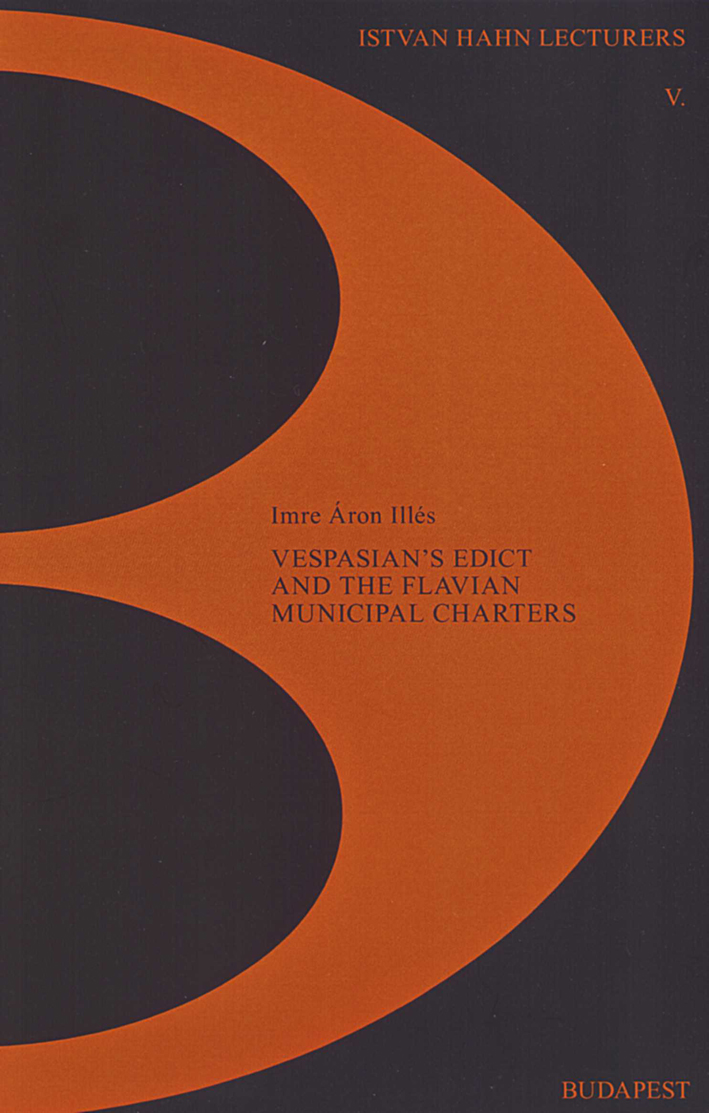
Imre Áron Illés, Vespasian's Edict and the Flavian Municipal Charters(István Hahn Lecturers V)Budapest 2016ISBN 978-963-284-769-6ISSN 2061-7348112 S./pp., 20 x 13 cm; broschiert/softcover

Повелителите на солта: Провадия-Солницата 5600 - 4350 г. пр. Хр.(National Archaeological Museum. Catalogues, volume 37)Sofia 2025ISBN 978-619-254-037-1 ISSN 2367-8860 200 S./pp., zahlr. Farbabb./num. colour figs., 25 x 22 cm; broschiert/softcover The exhibition catalogue presents over 530 finds discovered during the excavations of the salt-production and urban centre. The exhibits date from Late Prehistory, Late Hellenistic period and Antiquity.
